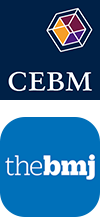



Leading up to Evidence Live 2016, we will be publishing a series of blog posts highlighting projects, initiatives and innovative ideas from future leaders in evidence based medicine.
Please read on for the second in the series from Kristin Danko at the University of Ottawa.
If you are interested in submitting a blog post, please contact alice.rollinson@phc.ox.ac.uk. Stay tuned!
 Translating evidence into practice, and in turn developing the science of translation is complex, challenging work. Several interrelated disciplines have arisen to address this challenge (e.g., implementation science, knowledge translation, quality improvement, among others) to determine the methods that most effectively get evidence into practice to improve health services and care. While the global objective of these disciplines is essentially the same, their methods, terminology and underlying epistemological frameworks are diverse (although not wholly indistinguishable) (2). Nilsen for example, identified over 40 theories, models and frameworks guiding the design, evaluation and interpretation of implementation studies (3). Lokker and colleagues noted 51 diverse classification schemes for characterizing the content of implementation interventions (4).
Translating evidence into practice, and in turn developing the science of translation is complex, challenging work. Several interrelated disciplines have arisen to address this challenge (e.g., implementation science, knowledge translation, quality improvement, among others) to determine the methods that most effectively get evidence into practice to improve health services and care. While the global objective of these disciplines is essentially the same, their methods, terminology and underlying epistemological frameworks are diverse (although not wholly indistinguishable) (2). Nilsen for example, identified over 40 theories, models and frameworks guiding the design, evaluation and interpretation of implementation studies (3). Lokker and colleagues noted 51 diverse classification schemes for characterizing the content of implementation interventions (4).
With so many options to choose from, is it any wonder that syntheses of implementation studies observe such diverse permutations of interventions with correspondingly high variation of effect (to say nothing of studies produced by researchers still choosing to remain agnostic to theories, models, and shared terminologies…). While such diversity of approaches speaks to the multidimensional nature of the phenomena being studied, it may limit the efficiency and effectiveness with which we are able to develop a cumulative science and may contribute to research waste (5).
How then, as a scientific community do we push this field forward to actualize the benefits of translating knowledge into practice and improve patient care? How do we become more scientific?
In considering such normative questions, I considered implementation science (broadly defined) through the lens of Thomas Kuhn’s classic, The Structure of Revolutions (1). If a paradigm is the map guiding research –that is, the force defining the realm of acceptable questions, methods, terminologies and solutions – then implementation science is currently operating under the direction of multiple competing and overlapping paradigms. Indeed, Kuhn’s articulation of a period of ‘extraordinary research’ (“The proliferation of competing articulations, the willingness to try anything, the expression of explicit discontent, the recourse to philosophy and to debate over fundamentals”, Kuhn, pg. 91 (1)) seems particularly apt in describing the current state of implementation science. Yet extraordinary research does not produce cumulative knowledge. Rather, one paradigm (or perhaps several complementing, but not incompatible paradigms) must emerge in order for productive science to be executed and global understanding advanced.
If this thought exercise is true, then what next? While it is difficult to know how to best achieve a more efficient and effective scientific state, researchers interested in translating evidence into practice could consider the following in their future studies with respect to implementation science paradigms:
Perhaps with these objectives in mind, we may shape future paradigms to better support our scientific understandings, rather then obfuscate them.
Kristin Danko is a second year doctoral student in the Department of Epidemiology at the University of Ottawa, and a research coordinator the Ottawa Hospital Research Institute. She is interested in improving synthesis methods for implementation science/knowledge translation interventions as well as knowledge translation methods for improving the conduct of primary studies themselves.